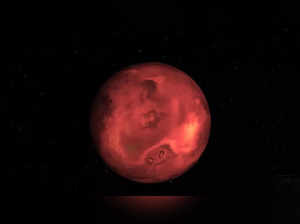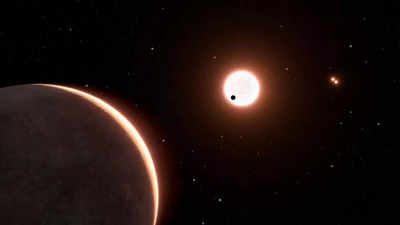Closest Earth-like planet only 22 light years away, scientists discover

Earth-like exoplanet 'LTT 1445 Ac' discovered by scientists to be only 22 light-years away from Earth. Source: NASA
Researchers have recently made an extraordinary celestial discovery, unveiling the existence of a planet remarkably similar in size to Earth, residing a mere 22 light-years away. This distant yet tantalizing world orbits a diminutive red dwarf star, presenting an intriguing addition to the roster of exoplanets.
CLICK HERE FOR VIDEO
Named LTT 1445 Ac by the scientific community, this Earth-sized exoplanet, painstakingly detected by astute scientists in the United States, boasts a mass approximately 1.37 times that of our home planet, with a radius of approximately 1.07 times that of Earth. The tantalizing proximity of this celestial body to our Solar System positions it as an excellent candidate for in-depth exploration.
Named LTT 1445 Ac by the scientific community, this Earth-sized exoplanet, painstakingly detected by astute scientists in the United States, boasts a mass approximately 1.37 times that of our home planet, with a radius of approximately 1.07 times that of Earth. The tantalizing proximity of this celestial body to our Solar System positions it as an excellent candidate for in-depth exploration.
However, the scorching surface temperatures on LTT 1445 Ac make it inhospitable for sustaining life as we know it. Despite this drawback, the striking resemblance between this newfound exoplanet and Earth is an invaluable opportunity for researchers to unravel the intricate complexities of planetary evolution. Probing further into the distinct factors that differentiate Earth-like worlds from one another is a quest that may yield profound insights into the nature of distant worlds.The identification of LTT 1445 Ac was made possible through data collected in 2021 by the Transiting Exoplanet Survey Satellite (TESS), an instrument meticulously designed to hunt for exoplanets. Yet, the intricate task of observing this celestial body presented challenges, impeding a comprehensive understanding of its properties. The complexities involved in observing exoplanets, particularly those nestled within systems of multiple stars, arise from the subtle effects exerted by companion stars on the light emitted by the host star.
But how do scientists untangle the mysteries shrouding these distant exoplanets?
Their quest is guided by two critical measurements: transit data and radial velocity data. The former involves detecting the minuscule dimming of a star's light when an orbiting exoplanet passes between the star and Earth. The latter measures the minute changes in the starlight's wavelength, divulging the gravitational pull exerted by an exoplanet on its host star.
These two sets of data are instrumental in unraveling the fundamental properties of exoplanets. Transit data aids in determining an exoplanet's radius by quantifying the extent of light dimming during a transit. Radial velocity data, on the other hand, offers crucial insights into the exoplanet's mass. When combined, these measurements reveal the exoplanet's density, a key parameter in deciphering its composition and structure.
An exoplanet with lower density may resemble a gas giant, potentially characterized by a thin atmosphere, whereas higher density implies a rocky composition akin to terrestrial planets like Earth, Venus, Mars, or Mercury.
An exoplanet with lower density may resemble a gas giant, potentially characterized by a thin atmosphere, whereas higher density implies a rocky composition akin to terrestrial planets like Earth, Venus, Mars, or Mercury.
This discovery is a testimony to humanity's relentless pursuit of understanding celestial bodies beyond the confines of our Solar System. The quest to comprehend these distant worlds fuels scientific curiosity and holds the promise of expanding our understanding of the vast and diverse cosmo.

Comments
Post a Comment